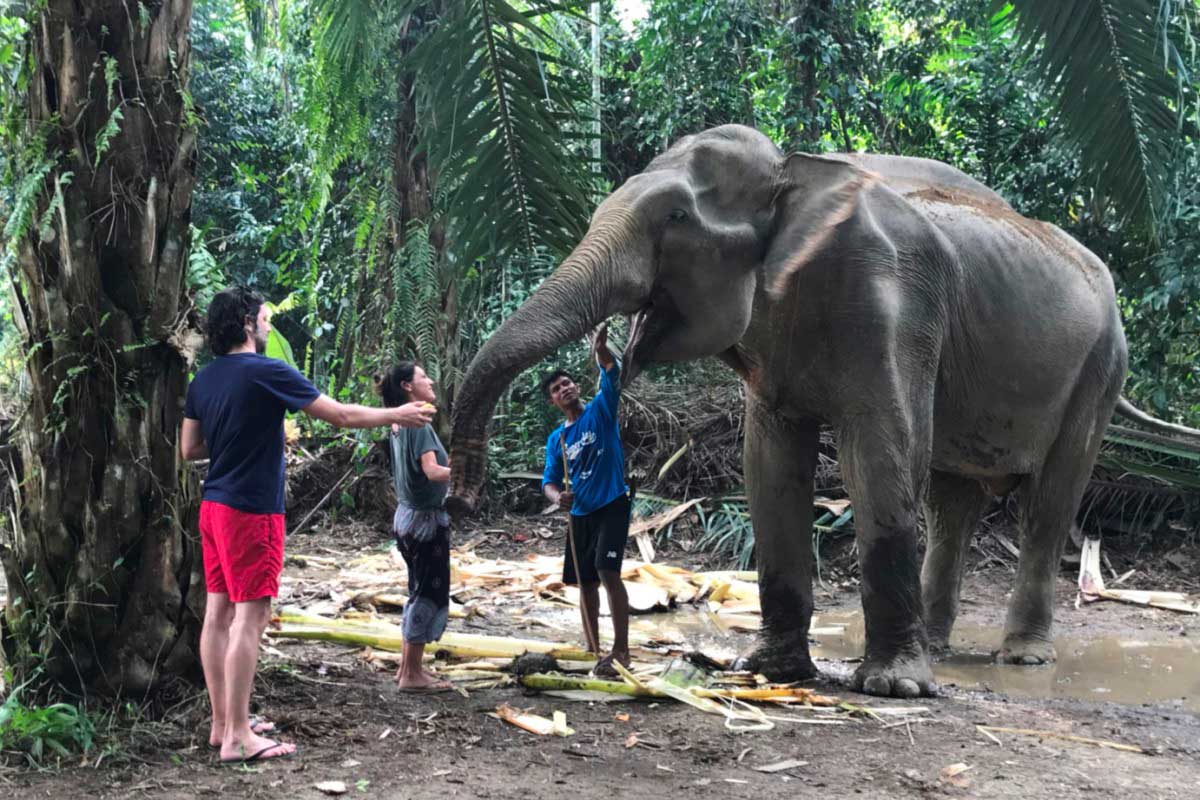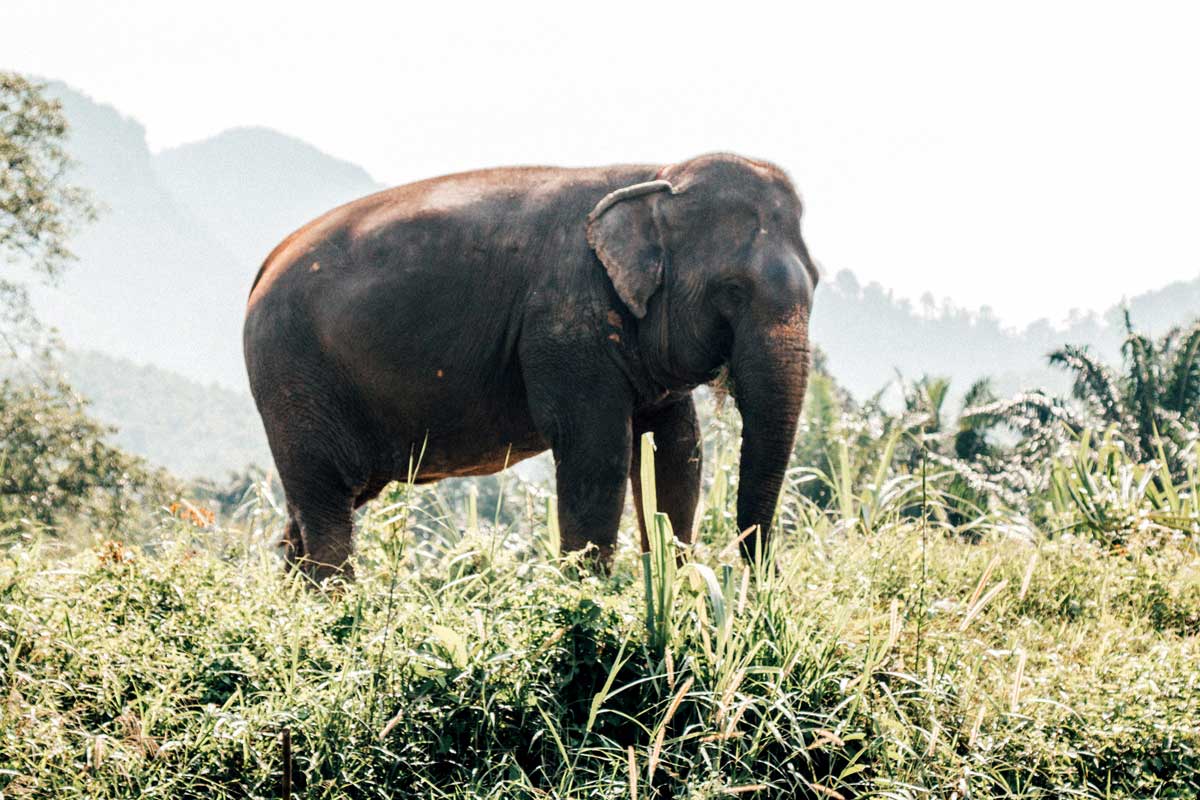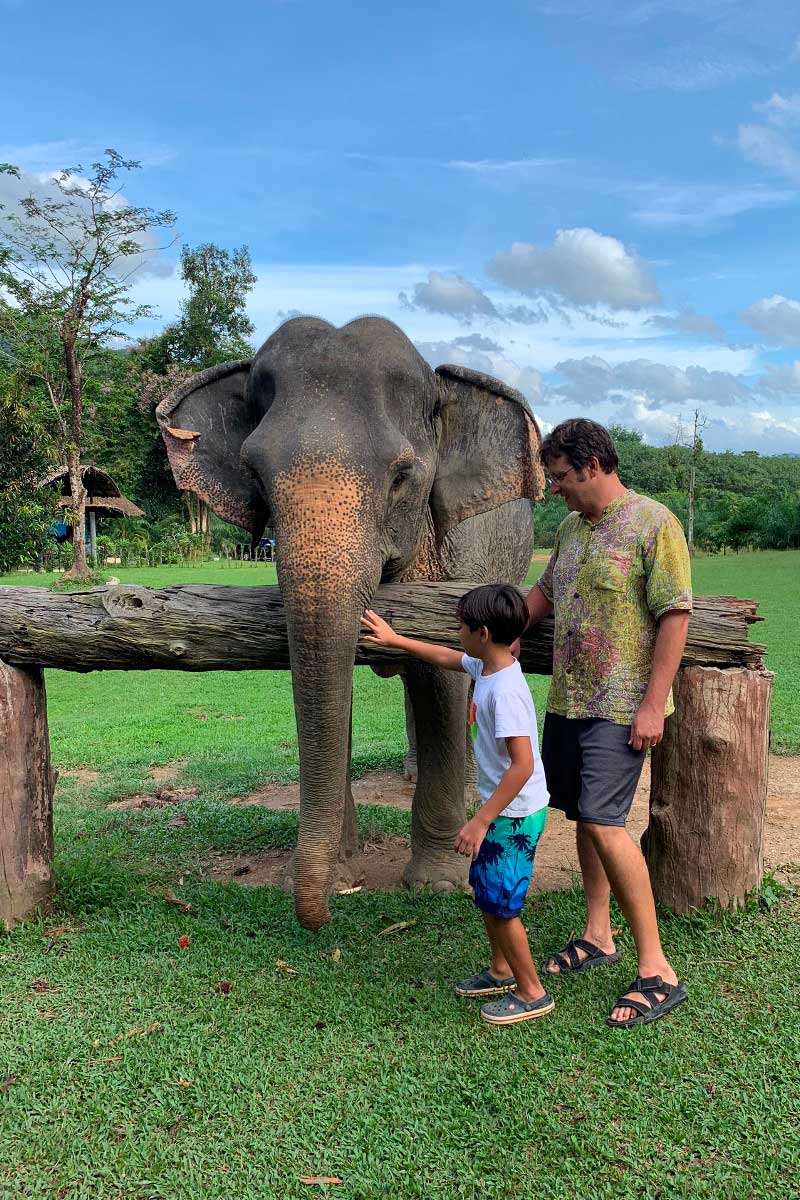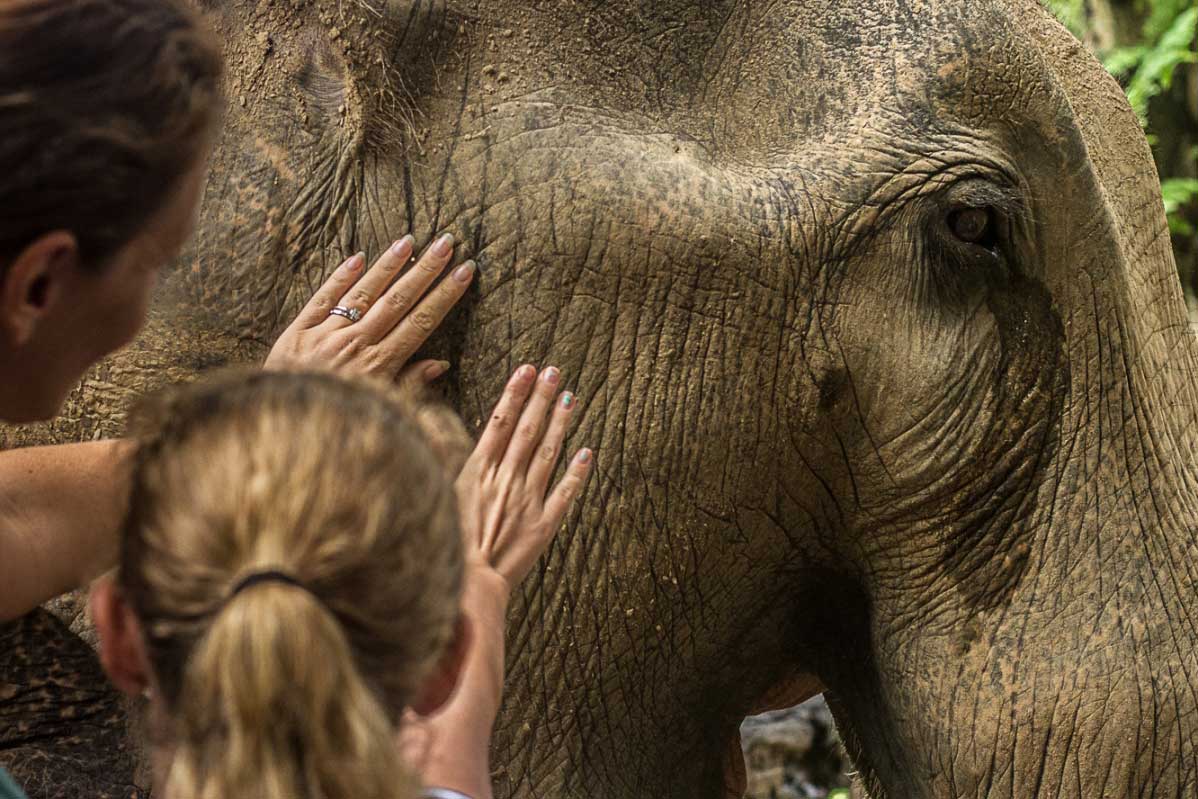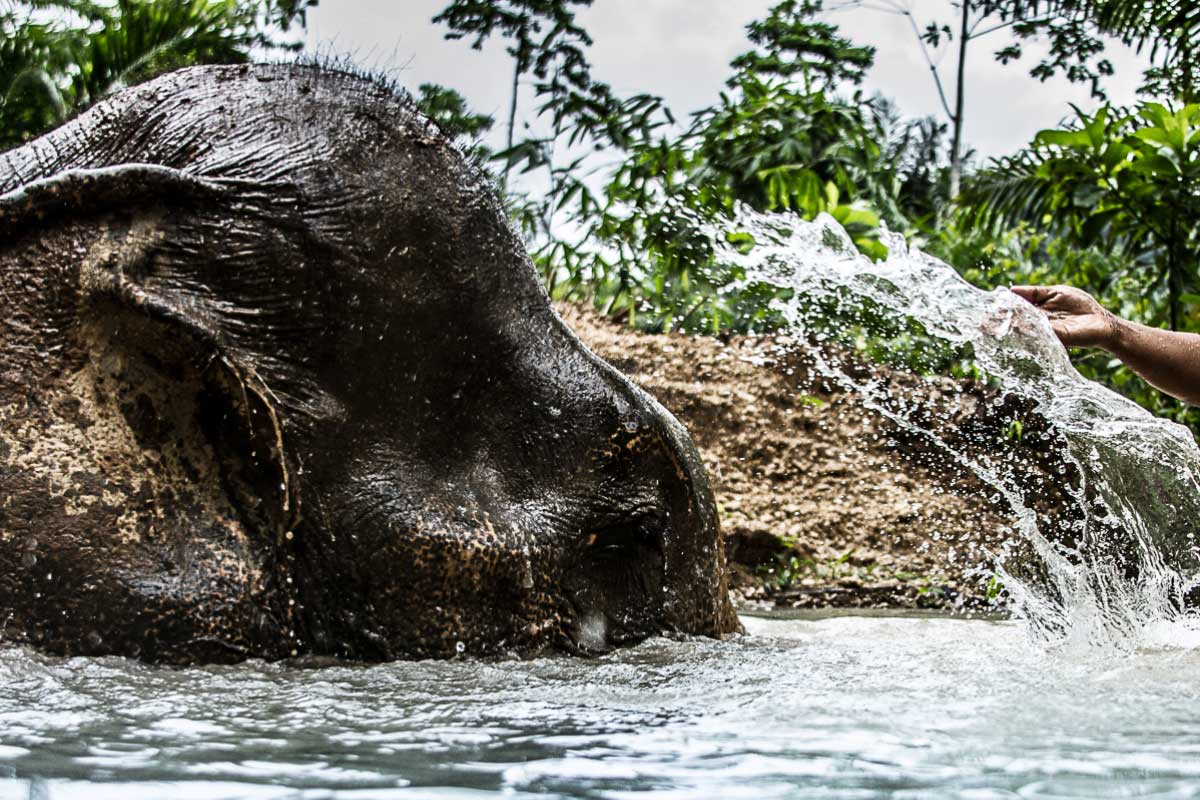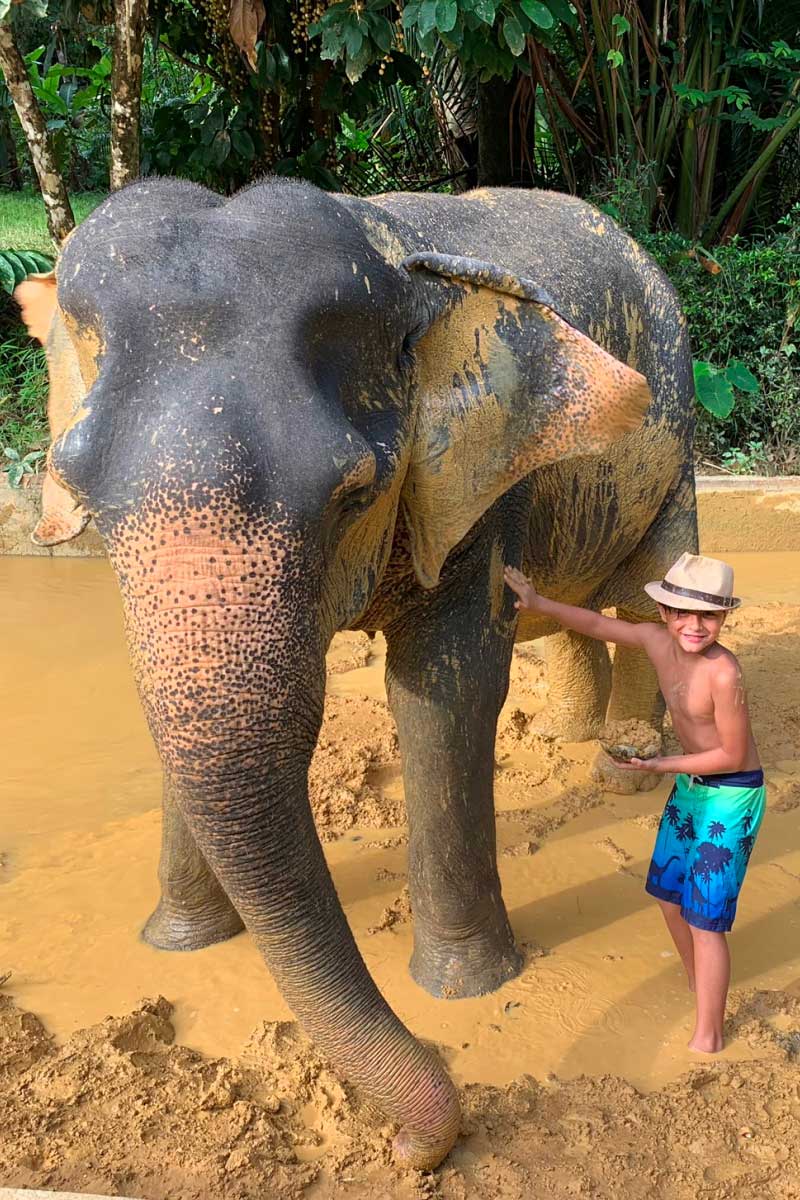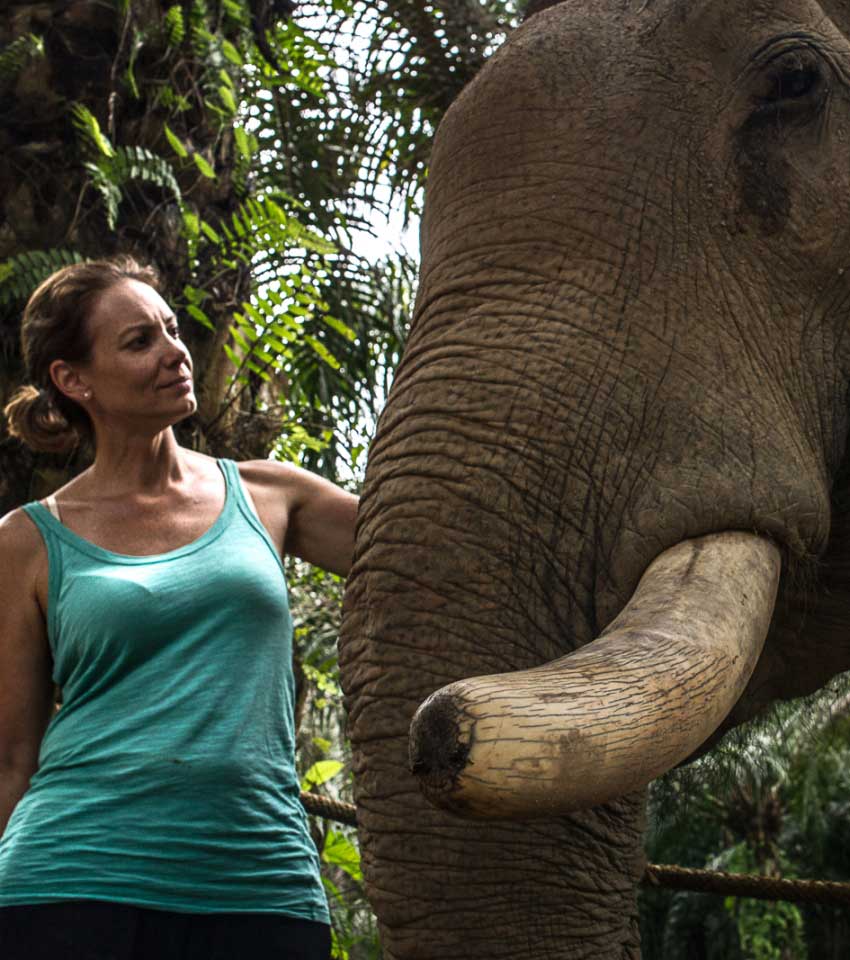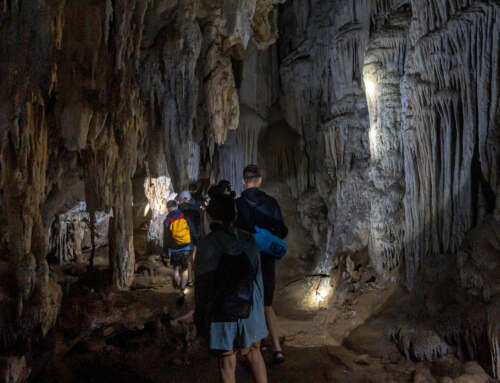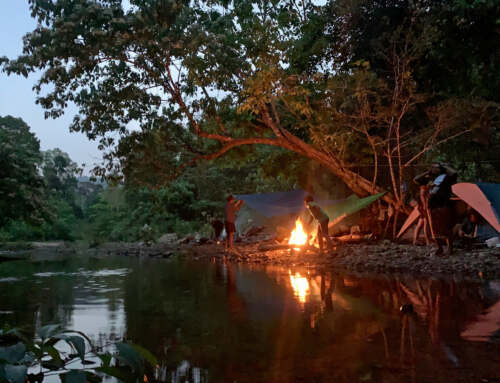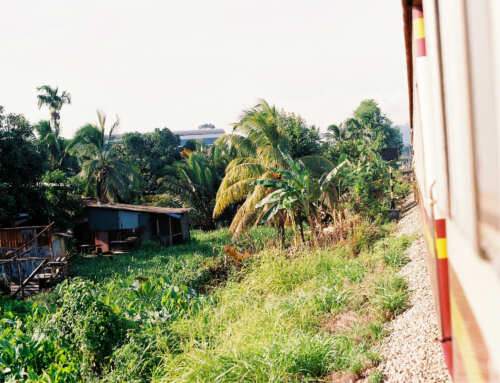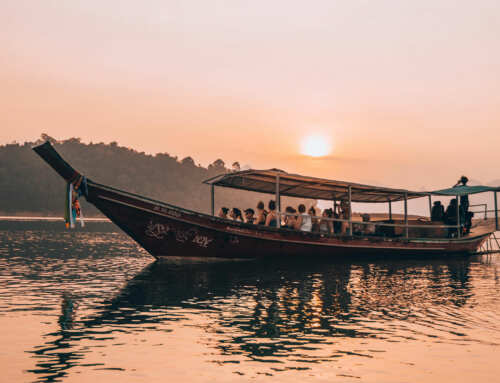For many guests visiting the Thailand jungle, visiting a Kao Sok elephant sanctuary is of great interest. This area has many options for a Khao Sok elephant experience. But are they truly ethical? Not all camps are equal. Thai elephant experts encourage camps that use only local Kao Sok elephants, experienced mahouts, and a low-intensity schedule for the animals. The camps described below are essentially elephant retirement sanctuaries, providing a no-ride program that is fun for guests and the elephant alike.
What to consider before a Khao Sok Elephant experience
We recommend that the mindful traveler avoid camps that offer elephant riding. While carrying travellers on their back may seem easy, it is still hard work. Even though they are massive, and their strength seems endless, Thai elephants need plenty of time to eat and rest. In fact, a wild Thai elephant spends about four hours a night sleeping, and the rest of their time eating! For this reason, it is important that Khao Sok elephants in the tourism industry are given plenty of time to rest, and plenty of opportunities to eat and drink.
Additionally, the metal benches used for trekking cause demonstrable damage to a Thai elephant’s spine and skin. The better option is to choose a Kao Sok elephant sanctuary, where these animals are respected and cared for. The best options: find an operation that works directly with local community partners! We’ve included our favorite picks below.
Good to know: Riding an elephant without a seat is not considered harmful to the animal. The natural seat at the base of the skull perfectly capable of supporting the weight of a full-grown man, and puts no pressure on the delicate backbone. If you have the chance to take a brief ride like this, you can enjoy it without guilt!
The best Khao Sok elephant experience – our suggestions
As a result of our focus on animal welfare, as well as community-based initiatives, we are happy to recommend the following four Kao Sok elephant sanctuary projects to our guests! The most well-known camp in the area is Elephant Hills, but in this blog, we focus on locally-owned camps. Collaboration with local partners is especially important for the movement towards ethical elephant activities as it empowers locals, and allows the community to benefit directly from this philosophy. To book one of the camps below, contact us or check out our Khao Sok Delight Package.
1. Sonchana Kao Sok elephant sanctuary, home of Somboon the Thai elephant
This was one of the first Kao Sok elephant sanctuary projects in the area. Just up the road from the Elephant Hills camp, It remains one of our favorite places to enjoy a Khao Sok elephant experience! The program at the family-owned Sonchana farm in the Thailand jungle focuses on caring for retired, aging Khao Sok elephants, including the 50+ year-old Somboon. Guests learn all about Somboon’s diet and daily life, and get to help make a traditional elephant food. Then it is time to feed the massive, gentle giant! The activity ends with an elephant bath, either in the river or a hand-dug pool of fresh river water. This is a great way to learn about Thai elephants and interact with one, while keeping him happy and healthy!
Distance from Khao Sok: 20 minutes
Highlights: Family hospitality and just one elephant – you can read a separate blog about Somboon here.
2. Jem’s Elephant Sanctuary
Located on an organic farm in a beautiful section of Thailand jungle, Jem’s Kao Sok elephant sanctuary is a great place to play with pachyderms. Similar to other sanctuaries, the focus is on education about elephants, and feeding and caring for them. Our favorite feature of this Khao Sok elephant experience is wandering around with the elephant through the organic farm. Finally, Jem’s sanctuary is owned and operated by a local farmer! As a result, the mindful traveler can rest easy, knowing that they are supporting groups that stand for a positive future for Thai elephants!
Distance from Khao Sok: 20 minutes
Highlight: Going on safari with the elephants to the river.
3. Hillside Elephant Retreat
This is the newest Kao Sok elephant sanctuary. Due to its stunning Thailand jungle location, and excellent treatment of elephants, it is quickly becoming a favorite among travelers! Hillside sanctuary offers an activity more commonly found in human spas: the mud bath. Much preferred to a freshwater bath by the elephant, rubbing mud on their skin helps protect and moisturize. After getting muddy, you can rinse off. Hillside is located in Rommani, a village with a long history of working with elephants. The activities offered at Hillside are in line with the ethical and responsible treatment of elephants that we recommend. Personal interactions, and the forming of an authentic connection are valued the most at this!
Distance from Khao Sok: 30 minutes
Highlights: Detailed information, and, of course, the mud bath.
It is unlikely that a Thai elephant mud bath will significantly improve your skin. However, it is very likely that it will do a great deal to improve your mood! Spend an hour in the Thailand jungle getting as dirty as possible, with the help of a Khao Sok elephant.
A local perspective on the Thai elephant and Khao Sok elephant tourism
In contrast to earlier times, when it was popular to purchase elephants as calves, the majority of elephants in Khao Sok elephant sanctuaries are retired. Prior to retirement, most of these animals worked in the logging industry in the Thailand jungle, where mistreatment was common. Logging elephants are frequently beaten and fed amphetamines to keep them working grueling hours. The sanctuaries we have listed above offer a chance for these animals to get some well-deserved rest and respect. Additionally, the growing popularity of community-based elephant sanctuaries signals a shift away from the exploitation of elephants in the tourism industry. This is the most hopeful sign of all!
As Thailand’s logging industry fades, and tourism grows, there will be those willing to exploit elephants for quick profits. However, profits depend on the willingness of foreign travelers to pay for exploitative activities. By choosing ethical, locally-founded elephant activities, you are adding your voice to a growing call for the end of elephant mistreatment. For that, we thank you!
Fun fact: Asian elephants get white and pink spots on their trunk when they become older – just as people develop age spots!

